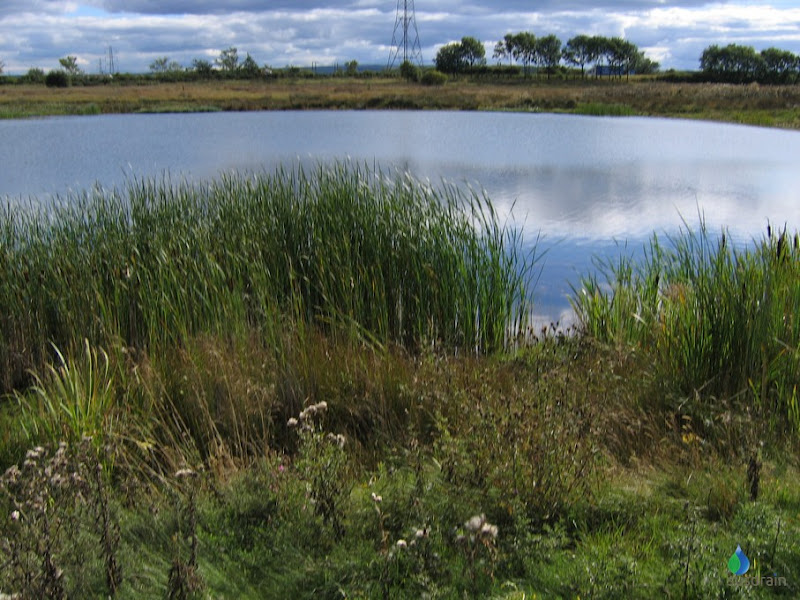- Delivering SuDS
- Using SuDS
- Background
- SuDS principles
- Benefits of SuDS
- Benefits of SuDS
- Why developers should choose SuDS
- Flood risk management
- Water quality management
- Biodiversity & ecology
- Amenity
- Air quality
- Building temperature
- Carbon reduction and sequestration
- Crime
- Economic growth
- Enabling development
- Flexible infrastructure/climate change adaptation
- Education
- Groundwater recharge
- Health and well being
- Pumping wastewater
- Rainwater harvesting
- Recreation
- Tourism
- Traffic calming
- Treating wastewater
- SuDS components
- SuDS components overview
- Source control
- Swales & conveyance channels
- Filtration
- Infiltration
- Retention & detention
- Wetlands
- Inlets, outlets and control structures
- SuDS performance & monitoring
- Delivery
- The costs & benefits of SuDS
- Adoption & maintenance of SuDS
- Legislation & regulation
- Design guidance
- Retrofitting SuDS
- Drainage exceedance
Component: Retention ponds

Description
Retention ponds can provide both stormwater attenuation and treatment. They are designed to support emergent and submerged aquatic vegetation along their shoreline.
Runoff from each rain event is detained and treated in the pool. The retention time promotes pollutant removal through sedimentation and the opportunity for biological uptake mechanisms to reduce nutrient concentrations.
Advantages & disadvantages
|
Advantages |
Disadvantages |
|
|
Where component can be used
Residential: Yes
Commercial/industrial: Yes
High density: Unlikely
Retrofit: Unlikely
Contaminated sites: Yes (with liner)
Sites above vulnerable groundwater: Yes (with liner)
Performance
Peak flow reduction: Good
Volume reduction: Poor
Water quality treatment: Good
Amenity potential: Good
Ecology potential: Good
Quantity
Ponds can be designed to control flow rates by storing floodwater and releasing it slowly once the risk of flooding has passed (also known as a balancing pond). The stored water will change the water level, and ponds should be designed to function in both dry and wet weather. Quantity can also be influenced by the amount of water that can be allowed to infiltrate into the ground if there is no risk to groundwater quality.
Quality
Ponds treat runoff in a variety of ways:
• settlement of solids in still water. Having plants in the water enhances calm conditions and promotes settlement
• adsorption by aquatic vegetation
• biological activity
Amenity
Ponds offer many opportunities for the landscape designer. Permanently wet ponds can be used to store water for reuse, and offer excellent opportunities for the provision of wildlife habitats. Ponds can be part of public open space.
Maintenance
• Litter/debris removal
• Inlet/outlet cleaning
• Vegetation management
• Sediment monitoring and removal when required.
More on:



